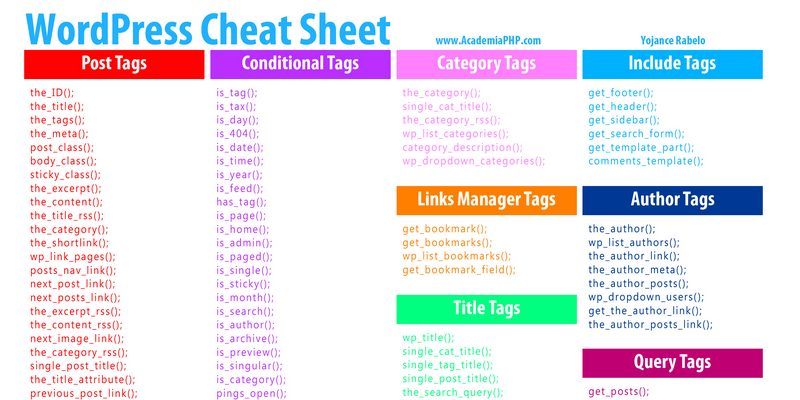9. Metadata — The Standard Ebooks Manual
9Metadata in a Standard Ebook is stored in the ./src/epub/content.opf file. The file contains some boilerplate that an ebook producer won’t have to touch, and a lot of information that they will have to touch as an ebook is produced.
Follow the general structure of the content.opf file generated by se create-draft. Don’t rearrange the order of anything in there.
General URL rules
- 9.1.1
URLs used in metadata are https where possible.
- 9.1.2
URLs used in metadata do not contain query strings, or if a query string is required, only contain the minimum necessary query string to render the base resource.
- 9.1.3
URLs used for Project Gutenberg page scans look like:
https://www.gutenberg.org/ebooks/<BOOK-ID>. - 9.1.4
URLs used for HathiTrust page scans look like:
https://catalog.hathitrust. org/Record/<RECORD-ID>
org/Record/<RECORD-ID> - 9.1.5
URLs used for Google Books page scans look like:
https://books.google.com/books?id=<BOOK-ID>. - 9.1.6
URLs used for Internet Archive page scans look like:
https://archive.org/details/<BOOK-ID>.
The ebook identifier
- 9.2.1
The
<dc:identifier>element contains the unique identifier for the ebook. The identifier is the Standard Ebooks URL for the ebook, prefaced byurl:.<dc:identifier>url:https://standardebooks.org/ebooks/anton-chekhov/short-fiction/constance-garnett</dc:identifier>
Forming the SE URL
The SE URL is formed by the following algorithm.
(Note: Strings can be made URL-safe using the se make-url-safe tool.)
Start with the URL-safe author of the work, as it appears on the titlepage. If there is more than one author, continue appending subsequent URL-safe authors, separated by an underscore.
Do not alpha-sort the author name.
Append a forward slash, then the URL-safe title of the work. Do not alpha-sort the title.
If the work is translated, append a forward slash, then the URL-safe translator. If there is more than one translator, continue appending subsequent URL-safe translators, separated by an underscore. Do not alpha-sort translator names.
If the work is illustrated, append a forward slash, then the URL-safe illustrator. If there is more than one illustrator, continue appending subsequent URL-safe illustrators, separated by an underscore. Do not alpha-sort illustrator names.
Finally, do not append a trailing forward slash.
Publication date and release identifiers
There are several elements in the metadata describing the publication date, updated date, and revision number of the ebook. Generally these are not updated by hand; instead, the 
- 9.3.1
<dc:date>is a timestamp representing the first publication date of this ebook file. Once the ebook is released to the public, this value doesn’t change. - 9.3.2
<meta property="dcterms:modified">is a timestamp representing the last time this ebook file was modified. This changes often.
Book titles
9.4.1Books without subtitles
- 9.4.1.1
The
<dc:title>element contains the title. - 9.4.1.2
The
<meta property="file-as" refines="#title">element contains alpha-sorted title, even if the alpha-sorted title is identical to the unsorted title.
<dc:title>The Moon Pool</dc:title>
<meta property="file-as" refines="#title">Moon Pool, The</meta> <dc:title>Short Fiction</dc:title>
<meta property="file-as" refines="#title">Short Fiction</meta>`9. 4.2
4.2Books with subtitles
- 9.4.2.1
The
<meta property="title-type" refines="#title">main</meta>element identifies the main part of the title. - 9.4.2.2
A second
<dc:title>element contain the subtitle, and is refined with<meta property="title-type" refines="#subtitle">subtitle</meta>. - 9.4.2.3
A third
<dc:title>element contains the complete title on one line, with the main title and subtitle separated by a colon and space, and is refined with<meta property="title-type" refines="#fulltitle">extended</meta>. - 9.4.2.4
All three
<meta property="file-as">element, even if thefile-asvalue is the same as the title.
<dc:title>The Moon Pool</dc:title>
<meta property="file-as" refines="#title">Moon Pool, The</meta><dc:title>The Man Who Was Thursday</dc:title>
<meta property="file-as" refines="#title">Man Who Was Thursday, The</meta>
<meta property="title-type" refines="#title">main</meta>
<dc:title>A Nightmare</dc:title>
<meta property="file-as" refines="#subtitle">Nightmare, A</meta>
<meta property="title-type" refines="#subtitle">subtitle</meta>
<dc:title>The Man Who Was Thursday: A Nightmare</dc:title>
<meta property="file-as" refines="#fulltitle">Man Who Was Thursday, The</meta>
<meta property="title-type" refines="#fulltitle">extended</meta>9. 4.3
4.3Books with a more popular alternate title
Some books are commonly referred to by a shorter name than their actual title. For example, The Adventures of Huckleberry Finn is often simply known as Huck Finn.
- 9.4.3.1
The
<dc:title>element contains the common title. It is refined with<meta property="title-type" refines="#title-short">short</meta>. - 9.4.3.2
The common title does not have a corresponding
<meta property="file-as">element.
Books with numbers or abbreviations in the title
Books that contain numbers or abbreviations in their title may be difficult to find with a search query, because there can be different ways to search for numbers or abbreviations. For example, a reader may search for Around the World in Eighty Days by searching for “80” instead of “eighty”.
- 9.4.4.1
<meta property="se:alternate-title" refines="#title">element is placed after the main title block, containing the title with expanded or alternate spelling to facilitate possible search queries.
<dc:title>Around the World in Eighty Days</dc:title> <meta property="file-as" refines="#title">Around the World in Eighty Days</meta> <meta property="se:alternate-title" refines="#title">Around the World in 80 Days</meta><dc:title>File No. 113</dc:title> <meta property="file-as" refines="#title">File No. 113</meta> <meta property="se:alternate-title" refines="#title">File Number One Hundred and Thirteen</meta>
Book subjects
9.5.1The
<dc:subject> element<dc:subject> elements describe the categories the ebook belongs to.
- 9.5.1.1
Each
<dc:subject>has theidattribute set tosubject-#, where # is a number starting at1, without leading zeros, that increments with each subject. - 9.5.1.2
The
<dc:subject>elements are arranged sequentially in a single block.
- 9.5.1.3
<dc:subject>values are sourced from Library of Congress Subject Headings. - 9.5.1.4
If the transcription for the ebook comes from Project Gutenberg, the values of the
<dc:subject>elements come from the Project Gutenberg “bibrec” page for the ebook. Otherwise, the values come from the Library of Congress catalog listing for the book. - 9.5.1.5
After the block of
<dc:subject>elements there is a block of<meta property="term" refines="#subject-N">element pairs.- 9.5.1.5.1
<meta property="authority" refines="#subject-N">contains the source for the category. For Library of Congress categories, the value isLCSH. - 9.5.1.5.2
<meta property="term" refines="#subject-N">contains term ID for that subject heading.
- 9.5.1.5.1
Examples
This example shows how to mark up the subjects for A Voyage to Arcturus, by David Lindsay:
<dc:subject>Science fiction</dc:subject>
<dc:subject>Psychological fiction</dc:subject>
<dc:subject>Quests (Expeditions) -- Fiction</dc:subject>
<dc:subject>Life on other planets -- Fiction</dc:subject>
<meta property="authority" refines="#subject-1">LCSH</meta>
<meta property="term" refines="#subject-1">sh85118629</meta>
<meta property="authority" refines="#subject-2">LCSH</meta>
<meta property="term" refines="#subject-2">sh85108438</meta>
<meta property="authority" refines="#subject-3">LCSH</meta>
<meta property="term" refines="#subject-3">sh3008110314</meta>
<meta property="authority" refines="#subject-4">LCSH</meta>
<meta property="term" refines="#subject-4">sh3008106912</meta> 9.5.2SE subjects
Along with the Library of Congress categories, a set of SE subjects is included in the ebook metadata. Unlike Library of Congress categories, SE subjects are purposefully broad. They’re more like the subject categories in a small bookstore, as opposed to the precise, detailed, hierarchical Library of Congress categories.
Unlike Library of Congress categories, SE subjects are purposefully broad. They’re more like the subject categories in a small bookstore, as opposed to the precise, detailed, hierarchical Library of Congress categories.
- 9.5.2.1
SE subjects are included with one or more
<meta property="se:subject">elements.<meta property="se:subject">Fantasy</meta> <meta property="se:subject">Philosophy</meta> - 9.5.2.2
There is at least one SE subject.
- 9.5.2.3
SE subjects are in alphabetical order.
All SE subjects
Adventure
Autobiography
Biography
Childrens
Comedy
Drama
Fantasy
Fiction
Horror
Memoir
Mystery
Nonfiction
Philosophy
Poetry
Satire
Science Fiction
Shorts
Spirituality
Travel
 5.2.5
5.2.5Required SE subjects for specific types of books
- 9.5.2.5.1
Ebooks that are collections of short stories have the SE subject
Shortsas one of the SE subjects. - 9.5.2.5.2
Ebooks that are young adult or children’s books have the SE subject
Childrensas one of the SE subjects.
Book descriptions
An ebook has two kinds of descriptions: a short <dc:description> element, and a much longer <meta property="se:long-description"> element.
The short description
The <dc:description> element contains a short, single-sentence summary of the ebook.
- 9.6.1.1
The description is a single complete sentence ending in a period, not a sentence fragment or restatement of the title.
- 9.6.1.2
The description is typogrified, i.e. it contains Unicode curly quotes, em-dashes, and the like.
 6.2
6.2The long description
The <meta property="se:long-description"> element contains a much longer description of the ebook.
- 9.6.2.1
The long description is a non-biased, encyclopedia-like description of the book, including any relevant publication history, backstory, or historical notes. It is as detailed as possible without giving away plot spoilers. It does not impart the producer’s opinions of the book, or include content warnings. Think along the lines of a Wikipedia-like summary of the book and its history, but under no circumstances can a producer copy and paste from Wikipedia! (Wikipedia licenses articles under a CC license which is incompatible with Standard Ebooks’ CC0 public domain dedication.)
- 9.6.2.2
The long descriptions is typogrified, i.e. it contains Unicode curly quotes, em-dashes, and the like.
- 9.6.2.3
The long description is in escaped HTML, with the HTML beginning on its own line after the
<meta property="se:long-description">element. The
The se cleantool will escape HTML in the long description for you. You can write regular HTML in the long description, then runse cleanto escape it automatically. - 9.6.2.4
Long description HTML follows the general code style conventions.
- 9.6.2.5
The first occurrence of the author’s name is linked to the Standard Ebooks author page. For example, for Arthur Conan Doyle this would look like
<a href="https://standardebooks.org/ebooks/arthur-conan-doyle">Arthur Conan Doyle</a>. If the long description references other authors, books and story collections that already have pages on Standard Ebooks then the first occurrence of these are linked as well.
Book language
- 9.7.1
The
<dc:language>element follows the long description block. It contains the IETF language tag for the language that the work is in. Usually this is eitheren-USoren-GB.
Book transcription and page scan sources
- 9.8.1
The
<dc:source>elements represent URLs to sources for the transcription the ebook is based on, and page scans of the print sources used to correct the transcriptions. - 9.8.2
<dc:source>URLs are in https where possible. - 9.8.3
A book can contain more than one such element if multiple sources for page scans were used.
Additional book metadata
- 9.9.1
<meta property="se:url.encyclopedia.wikipedia">contains the Wikipedia URL for the book. This element is not present if there is no Wikipedia entry for the book. - 9.9.2
<meta property="se:url.vcs.github">contains the SE GitHub URL for this ebook. This is calculated by taking the stringhttps://github.com/standardebooks/and appending the SE identifier, withouthttps://standardebooks., and with forward slashes replaced by underscores. org/ebooks/
org/ebooks/ - 9.9.3
<meta property="belongs-to-collection">contains the name of the collection the ebook belongs to.- 9.9.3.1
The value for this element must be the same for all ebooks in the collection.
- 9.9.3.2
The
idattribute iscollection-NwhereNis a positive integer starting at1. - 9.9.3.3
The element is further refined a
<meta property="collection-type" refines="#collection-N">element with the value ofsetorseries. See the EPUB spec for more details.
- 9.9.3.1
Book production notes
- 9.9.4.1
The
<meta property="se:production-notes">element contains any of the ebook producer’s production notes. For example, the producer might note that page scans were not available, so an editorial decision was made to add commas to sentences deemed to be transcription typos; or that certain archaic spellings were retained as a matter of prose style specific to this ebook.
- 9.9.4.2
The
<meta property="se:production-notes">element is not present if there are no production notes.
Readability metadata
These two elements are automatically computed by the se prepare-release tool.
- 9.9.5.1
The
<meta property="se:word-count">element contains an integer representing the ebooks total word count, excluding some SE files like the colophon and Uncopyright. - 9.9.5.2
The
<meta property="se:reading-ease.flesch">element contains a decimal representing the computed Flesch reading ease for the book.
General contributor rules
The following apply to all contributors, including the author(s), translator(s), and illustrator(s).
- 9.10.1
If there is exactly one contributor in a set (for example, only one author, or only one translator) then the
<meta property="display-seq">element is omitted for that contributor.
- 9.10.2
If there is more than one contributor in a set (for example, multiple authors, or translators) then the
<meta property="display-seq">element is specified for each contributor, with a value equal to their position in the SE identifier. - 9.10.3
The epub standard specifies that in a set of contributors, if at least one has the
display-seqproperty, then other contributors in the set without thedisplay-seqvalue are ignored. For SE purposes, this also means they will be excluded from the SE identifier. - 9.10.4
By SE convention, contributors with
<meta property="display-seq">0</meta>are excluded from the SE identifier.
The author metadata block
- 9.11.1
<dc:creator>contains the author’s name as it appears on the cover. - 9.11.2
If there is more than one author, the first author’s
idisauthor-1, the secondauthor-2, and so on.
- 9.11.3
<meta property="file-as" refines="#author">contains the author’s name as filed alphabetically. This element is included even if it’s identical to<dc:creator>. - 9.11.4
<meta property="se:name.person.full-name" refines="#author">contains the author’s full name, with any initials or middle names expanded, and including any titles. This element is not included if the value is identical to<dc:creator>. - 9.11.5
<meta property="alternate-script" refines="#author">contains the author’s name as it appears on the cover, but transliterated into their native alphabet if applicable. For example, Anton Chekhov’s name would be contained here in the Cyrillic alphabet. This element is not included if not applicable. - 9.11.6
<meta property="se:url.encyclopedia.wikipedia" refines="#author">contains the URL of the author’s Wikipedia page. This element is not included if there is no Wikipedia page.
This element is not included if there is no Wikipedia page. - 9.11.7
<meta property="se:url.authority.nacoaf" refines="#author">contains the URL of the author’s Library of Congress Names Database page. It does not include the.htmlfile extension. This element is not included if there is no LoC Names database entry.This is easily found by visiting the person’s Wikipedia page and looking at the very bottom in the “Authority Control” section, under “LCCN.”
If it’s not on Wikipedia, find it directly by visiting the Library of Congress Names Database.
- 9.11.8
<meta property="role" refines="#author" scheme="marc:relators">contains the MARC relator tag for the roles the author played in creating this book.There is always one element with the value of
aut. There may be additional elements for additional values, if applicable. For example, if the author also illustrated the book, there would be an additional<meta property="role" refines="#author" scheme="marc:relators">ill</meta>element.
This example shows a complete author metadata block for Short Fiction, by Anton Chekhov:
<dc:creator>Anton Chekhov</dc:creator>
<meta property="file-as" refines="#author">Chekhov, Anton</meta>
<meta property="se:name.person.full-name" refines="#author">Anton Pavlovich Chekhov</meta>
<meta property="alternate-script" refines="#author">Анто́н Па́влович Че́хов</meta>
<meta property="se:url.encyclopedia.wikipedia" refines="#author">https://en.wikipedia.org/wiki/Anton_Chekhov</meta>
<meta property="se:url.authority.nacoaf" refines="#author">http://id.loc.gov/authorities/names/n79130807</meta>
<meta property="role" refines="#author" scheme="marc:relators">aut</meta>9.12The translator metadata block
- 9.12.1
If the work is translated, the
<dc:contributor>metadata block follows the author metadata block. - 9.12.2
If there is more than one translator, then the first translator’s
idistranslator-1, the secondtranslator-2, and so on.
- 9.12.3
Each block is identical to the author metadata block, but with
<dc:contributor>instead of<dc:creator>. - 9.12.4
The MARC relator tag is
trl:<meta property="role" refines="#translator" scheme="marc:relators">trl</meta>. - 9.12.5
Translators often annotate the work; if this is the case, the additional MARC relator tag
annis included in a separate<meta property="role" refines="#translator" scheme="marc:relators">element.
The illustrator metadata block
- 9.13.1
If the work is illustrated by a person who is not the author, the illustrator metadata block follows.
- 9.13.2
If there is more than one illustrator, the first illustrator’s
idisillustrator-1, the secondillustrator-2, and so on. - 9.13.3
Each block is identical to the author metadata block, but with
<dc:contributor>instead of<dc:creator>.
- 9.13.4
The MARC relator tag is
ill:<meta property="role" refines="#illustrator" scheme="marc:relators">ill</meta>.
The cover artist metadata block
The “cover artist” is the artist who painted the art the producer selected for the Standard Ebook cover.
- 9.14.1
The cover artist metadata block is identical to the author metadata block, but with
<dc:contributor>instead of<dc:creator>. - 9.14.2
The MARC relator tag is
art:<meta property="role" refines="#artist" scheme="marc:relators">art</meta>.
Metadata for additional contributors
Occasionally a book may have other contributors besides the author, translator, and illustrator; for example, a person who wrote a preface, an introduction, or who edited the work or added endnotes.
- 9.15.1
Additional contributor blocks are identical to the author metadata block, but with
<dc:contributor>instead of<dc:creator>.
- 9.15.2
The
idattribute of the<dc:contributor>is the lowercase, URL-safe, fully-spelled out version of the MARC relator tag. For example, if the MARC relator tag iswpr, theidattribute would bewriter-of-preface. - 9.15.3
The MARC relator tag is one that is appropriate for the role of the additional contributor. Common roles for ebooks are:
wpr,ann, andaui.
Transcriber metadata
- 9.16.1
If the ebook is based on a transcription by someone else, like Project Gutenberg, then transcriber blocks follow the general contributor metadata blocks.
- 9.16.2
If the transcriber is anonymous, the value for the producer’s
<dc:contributor>element isAn Anonymous Volunteer. - 9.16.3
If there is more than one transcriber, the first transcriber is
transcriber-1, the secondtranscriber-2, and so on.
- 9.16.4
The
<meta property="file-as" refines="#transcriber-1">element contains an alpha-sorted representation of the transcriber’s name. - 9.16.5
The MARC relator tag is
trc:<meta property="role" refines="#transcriber-1" scheme="marc:relators">trc</meta>. - 9.16.6
If the transcriber’s personal homepage is known, the element
<meta property="se:url.homepage" refines="#transcriber-1">is included, whose value is the URL of the transcriber’s homepage. The URL must link to a personal homepage only; no products, services, or other endorsements, commercial or otherwise.
Producer metadata
These elements describe the SE producer who produced the ebook for the Standard Ebooks project.
- 9.17.1
If there is more than one producer, the first producer is
producer-1, the secondproducere-2, and so on. - 9.
 17.2
17.2The producer metadata block is identical to the author metadata block, but with
<dc:contributor>instead of<dc:creator>. - 9.17.3
If a producer is anonymous, the value for the producer’s
<dc:contributor>element isAnonymous. - 9.17.4
If the producer’s personal homepage is known, the element
<meta property="se:url.homepage" refines="#producer-1">is included, whose value is the URL of the transcriber’s homepage. The URL must link to a personal homepage only; no products, services, or other endorsements, commercial or otherwise. - 9.17.5
The MARC relator tags for the SE producer usually include all of the following:
bkp: The producer produced the ebook.blw: The producer wrote the blurb (the long description).cov: The producer selected the cover art.mrk: The producer wrote the HTML markup for the ebook.
pfr: The producer proofread the ebook.tyg: The producer reviewed the typography of the ebook.
The ebook manifest
The <manifest> element is a required part of the epub spec that defines a list of files within the ebook.
se print-manifest tool generates a complete manifest that can be copied-and-pasted into the ebook’s metadata file.- 9.18.1
The manifest is in alphabetical order.
- 9.18.2
The
idattribute is the basename of thehrefattribute. - 9.18.3
Files which contain SVG images have the additional
propertiesattribute with the valuesvgin their manifest item. - 9.18.4
The manifest item for the table of contents file has the additional
propertiesattribute with the valuenav. - 9.18.5
The manifest item for the cover image has the additional
propertiesattribute with the valuecover-image.
The ebook spine
The <spine> element is a required part of the epub spec that defines the reading order of the files in the ebook.
se print-spine tool generates a draft of the spine by making some educated guesses as to the reading order. The tool’s output is never 100% correct; manual review of the output is required, and adjustments may be necessary to correct the reading order.Метатег Author теперь используется как метатег Facebook
Мета-имя автора
Как отдать должное лицу компании, которая создала ваш сайт? Вы используете так называемый метатег AUTHOR.
Существуют также системы управления контентом (CMS), в которых упоминается имя фактического лица, редактирующего страницу. При таком использовании легко найти нужного человека, ответственного за веб-страницу.
Иногда CMS называет автора автором контента на веб-сайте, а веб-автора — менеджером почтового сервера.
Key Takeaway
- Всегда добавляйте тег Auhor в раздел HEAD вашего сайта.
- Тег автора теперь используется в качестве метатега Facebook. Если вы добавите тег автора Facebook на свой сайт, он будет отображать ваше имя со ссылкой на ваш профиль каждый раз, когда вашей статьей будут делиться.
Это отлично подходит как для блогов с одним автором, так и для блогов с несколькими авторами, поскольку позволяет лучше представить ваш личный бренд.
Измеритель влияния SEO
Тег автора (Facebook) имеет
некоторое влияние на SEO!
Пример автора кода HTML
Мы предлагаем доступные услуги поисковой оптимизации, которые являются быстрыми и эффективными.
Метатеги DIY
$0
Создать метатеги не так сложно. Мы упростили вам задачу, предложив вам этот бесплатный мастер метатегов.
Генератор метатегов
Boost My Metatags
$299один раз
Вы создали идеальные метатеги.
 Пришло время сообщить всему миру, что ваш веб-сайт открыт для бизнеса.
Пришло время сообщить всему миру, что ваш веб-сайт открыт для бизнеса.Заказать SEO Boost
Создать мои метатеги
$99 за страницу
Доверьтесь экспертам. Мы создаем идеальные мета-теги для вас. Создавайте идеальные ключевые слова, привлекающие нужных клиентов.
Запросить поддержку
Нужна профессиональная
SEO-помощь?
Свяжитесь с нашим представителем по работе с клиентами, чтобы назначить встречу и ответить на все ваши вопросы!
Блог SEO и интернет-маркетинга
Лучшие генераторы контента с искусственным интеллектом для изучения в 2023 году
Опубликовано MetaTags
Чат GPT! Почему…
Подробнее
Имеет ли место в Google контент, написанный с помощью ChatGPT?
Опубликовано MetaTags
ChatGPT — это программное обеспечение языковой модели, которое помогает ему генерировать текст; однако ранжирование текста в Google будет…
Подробнее
Повысьте SEO-рейтинг вашего бизнеса с помощью этих 5 советов. Времена меняются, маркетинговые стратегии развиваются, чтобы полностью адаптироваться к изменениям…
Подробнее
html — Как правильно использовать тег?
спросил
Изменено 4 года, 1 месяц назад
Просмотрено 3к раз
Должен ли тег author быть автором содержимого страницы или автором HTML (если они разные)?
Спецификация (w3/moz) не помогает мне разобраться.
(Я понимаю, что это может не иметь значения для SEO.)
- html
- метатеги
- автор
0
автор , как одно из стандартных имен метаданных, определено в спецификации HTML:
Значение должно быть строкой произвольной формы, содержащей имя одного из авторов страницы.
В его определении нет ничего другого, поэтому авторы, а также потребители разметки должны основывать свое использование только на этом предложении.
На мой взгляд, «автор страницы» относится к автору контента. Причины, по которым:
- Если имелось в виду что-то другое, определение должно было пояснить это.
- Разметка контента с помощью HTML обычно не соответствует порогу оригинальности, поэтому, что касается авторских прав/атрибуции, обычно нет необходимости указывать автора разметки.
- Существуют и другие имена метаданных для лиц, отвечающих за «визуальное представление» (
дизайнер) и «технический дизайн» (web_author).
У меня есть привычка указывать свое имя (как дизайнера сайта). Если содержимое страницы содержит статью, то информация об авторе статьи должна быть включена в отступ на странице (если это соответствует вашей структуре дизайна).
- metatags.org указывает
что именно человек/компания создала веб-страницу.



 org/Record/<RECORD-ID>
org/Record/<RECORD-ID>



 The
The 
 org/ebooks/
org/ebooks/


 This element is not included if there is no Wikipedia page.
This element is not included if there is no Wikipedia page.




 17.2
17.2


